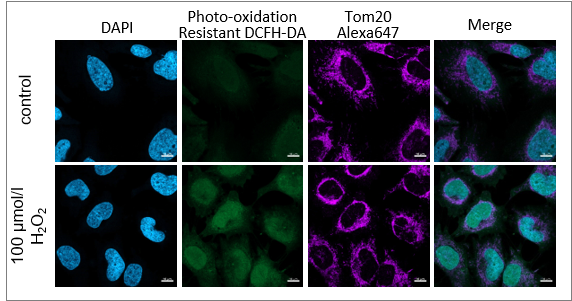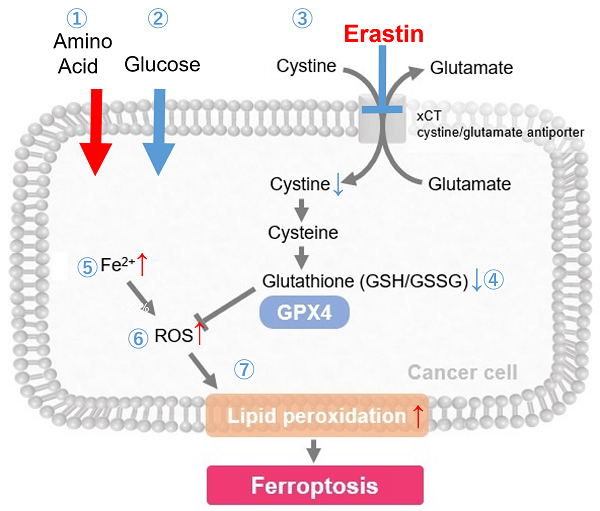Super High-Sensitive ROS Detection
Comparison of Sensitivity: Microscope

Hydrogen peroxide (H2O2)-treated HeLa cells (1×104 cells/ml) were stained with DCFH-DA or the ROS Assay Kit-Highly Sensitive DCFH-DA, and the detectability of intracellular ROS was compared between two detection kits. Results indicated that the ROS Assay Kit-Highly Sensitive DCFH-DA was better at high-sensitivity detection of intracellular ROS than regular DCFH-DA in high-sensitivity detection of intracellular ROS was better than DCFH-DA.
Ex: 450-490 nm, Em: 500-550 nm (GFP filter), Scale bar: 50 μm
Comparison of Sensitivity: Plate reader

In Lipopolysaccharide (LPS)-treated RAW 264.7 cells, after being stained with regular DCFH-DA, Highly Sensitive DCFH-DA, or Photo-oxidation Resistant DCFH-DA, the intracellular ROS levels were compared. The results showed that the Dojindo Laboratories’ probes could detect intracellular ROS with higher sensitivity.
Ex: 490 – 520 nm, Em: 510 – 540 nm









.png)


.png)
.png)
.png)

















